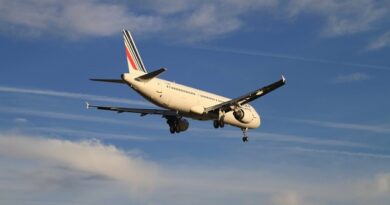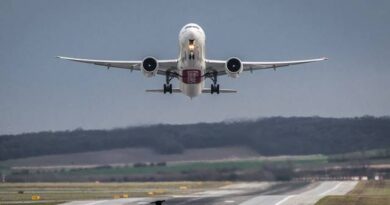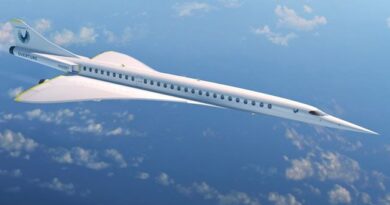Rate of Climb & Rate of Descent
The concepts of rate of climb and rate of descent are fundamental to aviation, as they refer to the vertical movement of an aircraft. In simple terms, the rate of climb refers to the speed at which an aircraft ascends, while the rate of descent refers to the speed at which it descends. These rates are measured in feet per minute (ft/min) and are critical factors in the safety and efficiency of flight operations.
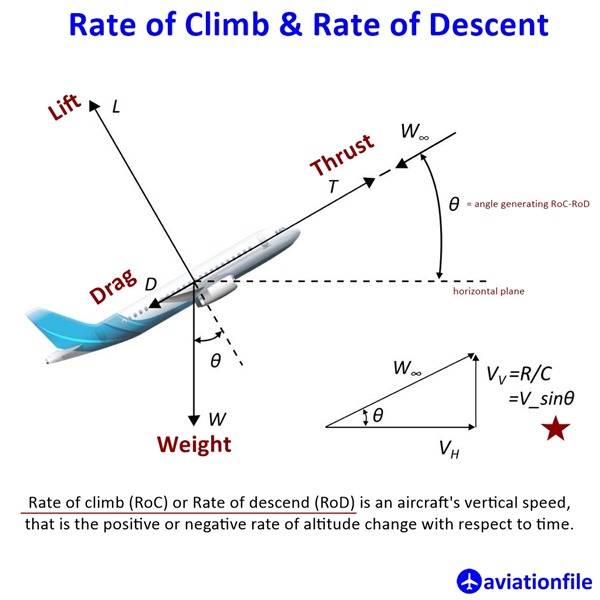
Rate of Climb
Rate of climb refers to the speed at which an aircraft ascends. It is typically measured in feet per minute (ft/min) and is influenced by a range of factors such as the aircraft’s weight, engine power, and the prevailing weather conditions. The rate of climb is critical during takeoff, as the aircraft needs to gain altitude quickly to clear any obstacles and establish a safe altitude.
The rate of climb can vary depending on the type of aircraft and the phase of flight. For example, a commercial airliner may have a rate of climb of around 1,500 ft/min during cruise, while a military fighter jet can climb at a rate of up to 10,000 ft/min. During takeoff, the rate of climb can be even higher, with commercial airliners typically climbing at around 2,500-3,500 ft/min.
Pilots can control the rate of climb by adjusting the aircraft’s pitch angle, engine power, and airspeed. A steep pitch angle and higher engine power can result in a higher rate of climb, but it can also increase drag and reduce efficiency. The airspeed also plays a critical role, as a higher airspeed can increase lift and result in a higher rate of climb.
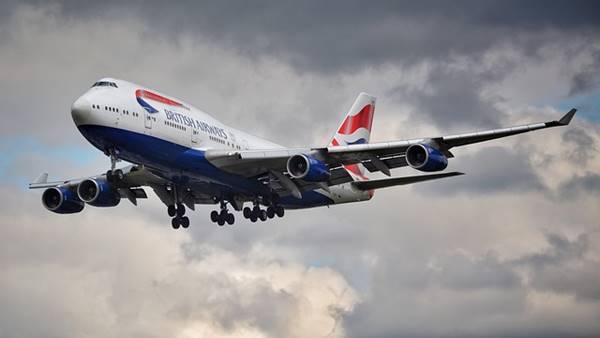
Rate of Descent
Rate of descent refers to the speed at which an aircraft descends. Like the rate of climb, it is measured in feet per minute (ft/min) and is influenced by a range of factors such as the aircraft’s weight, engine power, and the prevailing weather conditions. The rate of descent is critical during the approach and landing phase, as the aircraft needs to descend to a safe altitude to establish the correct approach path.
The rate of descent can vary depending on the type of aircraft and the phase of flight. For example, a commercial airliner may have a rate of descent of around 500-700 ft/min during approach, while a military fighter jet can descend at a rate of up to 10,000 ft/min. During emergency descents, the rate of descent can be even higher, with pilots descending at rates of up to 10,000 ft/min.
Pilots can control the rate of descent by adjusting the aircraft’s pitch angle, engine power, and airspeed. A shallower pitch angle and lower engine power can result in a slower rate of descent, but it can also increase drag and reduce efficiency. The airspeed also plays a critical role, as a lower airspeed can reduce lift and result in a higher rate of descent.
ATC and Rate of climb, Descent
Air Traffic Control (ATC) plays a vital role in managing RoC and RoD for controlled airspace. They issue clearances specifying the desired climb or descent rate for each aircraft, ensuring separation and maintaining traffic flow.
Clearances: ATC clearances often include specific RoC or RoD instructions. For example, “Climb to FL150, maintain ROC 1500 feet per minute.” Pilots must adhere to these clearances unless encountering emergencies.
Why are RoC and RoD Important?
- Pilots use RoC and RoD to maintain safe separation between aircraft, especially during climb and descent.
- Knowing the RoC helps pilots reach cruising altitude efficiently.
- RoD plays a role in planning approach and landing profiles for smooth touchdowns.
References and Further Reading Links:
- “Pilot’s Handbook of Aeronautical Knowledge,” Federal Aviation Administration (FAA), 2016.
- “Airplane Flying Handbook,” Federal Aviation Administration (FAA), 2016.
- “Aerodynamics for Naval Aviators,” U.S. Navy, 2012.
- “The Complete Private Pilot,” Bob Gardner, 2016.
